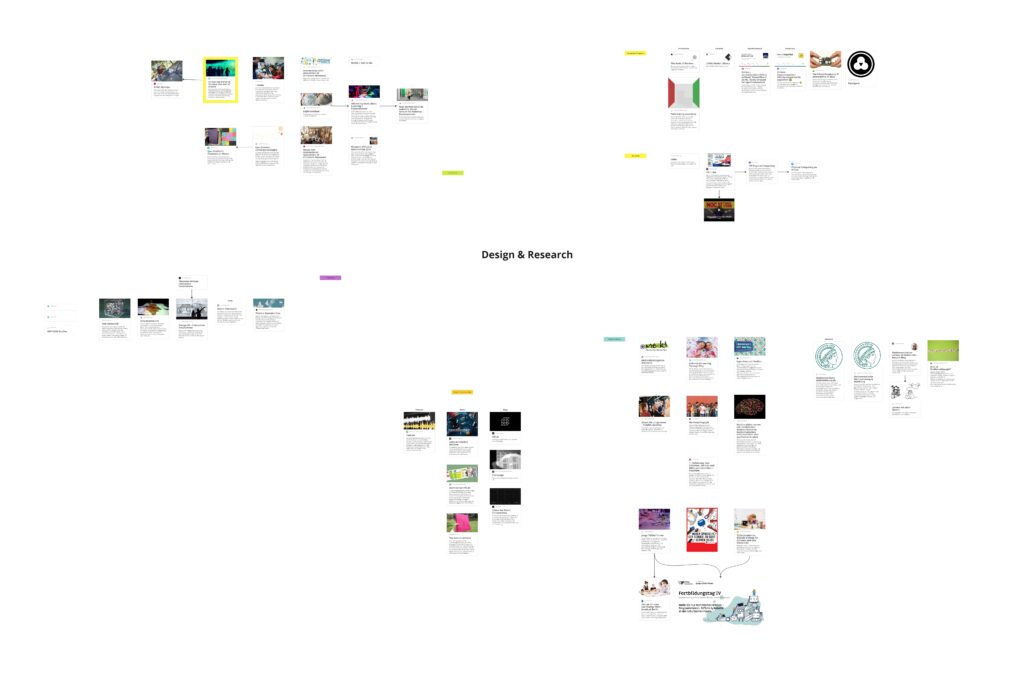This blog post is a follow up to my previous post and focuses on additional collected sources for my mind map. This will also be the last blog post giving insights into my exploratory research stage as I will focus on clustering the topics to get deeper insights into intersections and further research on topics already on the min map. During the week I added 34 new sources to my mind map which gives a total number of 60 sources.
Note: Since all notes on the mind map are linked to their sources and are used for structuring my research interests only, I will not provide additional information or references on all topics at the end of this post.
What has changed
I added sources to the topics “Generative Art” (which I renamed to “Design with Code”) and “Media Didactic” – focusing mainly on the topic “Media Didactic”. Moreover, I found an article about exhibits in the New York Hall of Science and added it to “Institutions”, giving insights into the mechanics of the work being done behind the scenes. [1] Finally, I added two blogs about technology, society and critical making and a book about mathematical principles behind our physical world including possibilities of creating a digital world out of it. [2][3]

The Human Perception
In the following paragraph I want to talk about multi-sensory perception, as the human perception is the bases for every interaction. When we speak about hands-on exhibits, the visitor first has to perceiving his environment. This is being done via multiple sources of sensory information derived from different modalities like vision, touch and audition. Some sources derive from different modalities but provide information about the same object. For example, a flying bird can be seen with eyes or heard with ears. This phenomenon can also be described as redundant sources of sensory information and is used by our brain to interact with the environment in a purposive fashion. [4]
Now let us connect human perception with the ability to learn vocabulary!
The more matching sensory impressions are involved in the learning process at the same time, the easier it is for the brain to understand and store the vocabulary. According to a research article from the Max-Planck-Society, the movement system in the brain appears to be particularly important – active movement and gestures have helped remembering the vocabulary. Apart from movement, the authors state that pictures have also helped to remember vocabulary better. However, further research must be made. [5]
Despite the fact that this theory sounds very logical and having made the experience that learning is easier combined with movement too, I would like to add that humans can not only be seen as rational beings. In my opinion emotions play a fundamental role – not only when it comes to the process of learning as in one of the articles noted, but also in the way we process and interpret the perceptions of our environment.
References:
[1] https://childrensmediaassociation.wordpress.com/2019/03/24/3865/
[2] https://www.creativeapplications.net/; https://www.holo.mg/
[3] https://natureofcode.com/
[4] https://www.mpg.de/820840/forschungsSchwerpunkt
[5] https://www.mpg.de/8930937/vokabel-lernen-gesten